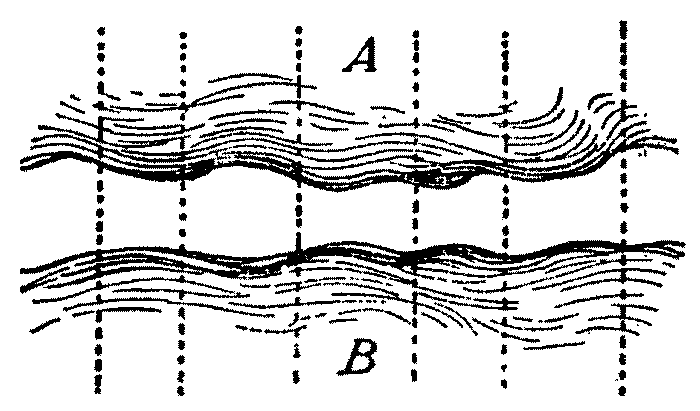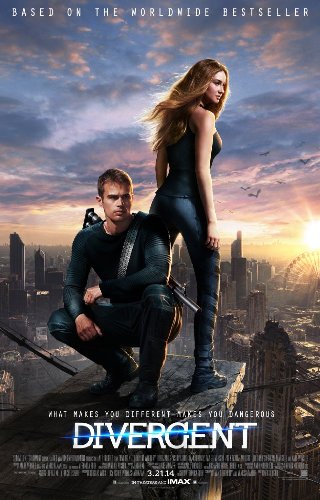I concluded my earlier post (April 28, 2025) with a challenge: Should anthropologists continue to report all evidence of class (what I refer to here as “factions” based on race, genders, orientations, etc.) in the United States as an “American Dilemma” (Myrdal 1944), or as a conflict between “Dream and Reality” (Warner 1953; and passim in the literature), or, as I would suggest, constitutive of each other? Any answer is so heavily loaded in, precisely, America that anthropologists should maybe walk away from the questions and simply (!) provide the detailed, and theoretically well grounded, descriptive accounts that only they can produce. How the work may then be used for political purposes should remain a separate issue.
I had started by noting how Francis Hsu (1972) interpreted the emphasis on dilemmas and tensions as evidence of the unquestioned grounding of American social science in the core American ideological apparatus. Actually, Louis Dumont had made an even more radical point starting with his “Caste, Racism and ‘Stratification'” ([1961] 1980) and continuing in his exploration of the rise of individualistic discourses in Europe and then across the Atlantic ([1983] 1986). Both made the fundamental anthropological point that comparative evidence suggests that the emphasis on (in-)equality is a very American (Western?) thing.
Is this “bias”? Or can we do something more interesting with the dual ubiquity of class and the negative evaluation of the classes in the ethnography of the United States (as well as in the popular imagination)? Might it make sense to treat the ever renewed performances as “total social facts”?
Until now, the perennial way to deal with the apparent contradiction between “reality’ (class, etc.) and “ideology” (individualism) has been some version of the Parsonian attempt to distinguish the “social” (reality, behavior) from the “cultural” (values, mis-knowings) (Parsons and Shils 1951). This led David Schneider (1968) to insist that his analysis of “American kinship” was solely a “cultural” account thereby implying that when he wrote about “blood” or “love” as organizing symbols, he was not talking about behavior in the households of the United States.
Of course, the distinction does not work: “love” is not only an idea or a symbol. Love is also a complex discursive performance that brings together a crowd of more or less willing participants and can even change the laws and practices of the United States (Oh 2022). It may be, in current vocabulary, “systemic.”
So, let’s explore an alternative. In accordance with my own methodology of not separating the social from the cultural, I start with an item in the real life of the second decade of the 21st century. It was an object made by a large American corporation who assembled a huge set of producing participants (from a director to the drivers of the stars—as are listed in the final credits of all movies), and made visible on the screen of movie theaters around the world, a set of actors animating a story about some dystopian future. This extremely concrete human construction “grossed” close to $300 million dollars and was followed by two more. All this is extremely “real” (social, behavioral) leading to a fantasy that is also a myth, and a moment in what Drummond called “the American dreamtime” (1996): the movie Divergent (2014).
What did the many who paid to watch the movie see? In my blog at the time (“Dreaming of diverging” March 25, 2014) I wrote that this was, in great part a high school movie with a strong critique of contemporary high school life and of the forces that organize it. I quipped that the movie “is, and I stretch, Bourdieu for 12-year-olds.” Check the extract from a scene now available on YouTube. In this scene the heroine is entering the cafeteria for the first time, looks for a table, sits down at one and starts small talk, eventually asking a question to a student who responds “Who told you that you could speak to me?” I leave aside for now what I just noticed watching the scene again: it could be seen as a rescripting of Elizabeth and Darcy’s first meeting in Pride and Prejudice. Even though the heroine and the student will eventually escape the city together (no marriage mentioned, just loving sex), this is actually a subplot. The main plot is about discovering the horrors of a class system tightly organized by a caricature of the American system of aptitude testing—and then fighting against it by “trust[ing] yourself” even when (particularly when?) one is somehow “divergent.”
The success of the movie (and of similar movies and fiction going back perhaps to Dreiser’s novel American tragedy (based on a true crime) would suggest that what it depicts if very familiar. Many of those who have been the consumers of such works of imagination must have experienced something that they might tell in very similar terms, if given the opportunity. And indeed, if one is to trust about all ethnographic reports by anthropologists, it is not a stretch to say that many students and teachers would agree with those who wrote the script for Divergent 1) that there is much “faction”-based activity in their school and 2) that this is bad. After a half century of asking students who went through American high schools whether there are cliques in their school, I am yet to find one that would disagree about this telling of their their overall experiences.
On the basis of such evidence most social scientists will do what Bourdieu did when he considered it as an evidence of the “reproduction” of an older social order founded on habits “learned early in life” and from which one could not escape. Bourdieu did write about structuring forces that would, I imagine he meant, organize an improvised performance (such as entering one’s high school cafeteria for the first time). But never provided a good way to account for the actual production of what would then become observable and reportable.
Concretely, when 15 year olds enter a high school cafeteria for the first time, what do they do? There are many accounts and reminiscences of the attendant anxiety. But I more concerned here with the reality that most of these adolescents do not quite know what to do next, concretely, as they look left and right, The first words in the Divergent cafeteria scene are “Shall we sit [here]” from the heroine to her friend.
perhaps searching for signs from others about where they should sit and, by implication, with whom they should sit. They probably, and accurately, expect to be corrected if not sanctioned by other students, as they find their way to a table that may become the one table at which they will sit for the next four years thereby justifying their identification by all others (including observing anthropologists) as a clique, if not a “faction”—even when they would refuse this identification, as they are also taught they should, for what is just “a loose group of friends” brought together by a joint interest in some activity, from football to theatre.
So, to develop more concretely what Dumont suggested, what if factions (cliques, classes, races, genders, etc.) in schools (and beyond) started with the schools offering a set of very diverse activities? These have various easily identified properties and they are also somehow limited by some aspects of the activity: there can only be one quarterback, or one or two leads in some school play. The more activities in a school, the more the student body will be divided, AND the more the division will be deplored as consequences emerge. Margaret Mead introduced this point in Coming of age in Samoa when she drew implications of her work for the lives of American adolescents as she emphasized a “dazzling world of choices” (1928 200). But, of course, she did not conduct the ethnographies that would prove her possibly quite right.The multiplication of ethnic/racial/gender identities and their respective performative activities will produce further, sometimes cross-cutting divisions. The further twist of course is that one will also be told that gaining membership in any of the factions is a combination of impersonal biological ability, and personal psychological fortitude, willingness, or identification.
As it is summarized by all actors “be true to yourself”! America!
References
Dumont, Louis [1961] 1980 “Caste, racism and ‘stratification’: Reflections of a social anthropologist.” in his Home hierarchicus. Rev. ed. tr. by M. Sainsbury. Chicago: The University of Chicago.
[1983] 1986 Essays on individualism: Modern ideology in anthropological perspective.. Chicago: University of Chicago Press.
Oh, Reginald 2022 “Love is Love: The Fundamental Right to Love, Marriage, and Obergefell v. Hodges.” TitleLaw Faculty Articles and Essays .: 1237. https://engagedscholarship.csuohio.edu/fac_articles/1237
Parsons, Talcott and Edward Shils 1951 Toward a general theory of action. New York: Harper and Row.
Schneider, David 1968 American kinship: A cultural account. Chicago: University of Chicago Press.
Hsu, Francis 1972 “American core value and national character,” in Psychological anthropology. Edited by F. Hsu. Cambridge, MA: Schenkman Publishing Company. pp. 201-240.
Myrdal, Gunnar 1944 An American dilemma: The Negro problem and modern democracy. New York: Harper and Row.
Warner, W. Lloyd
1953 American life: Dream and reality. Chicago: University of Chicago Press
 Print This Post
Print This Post
 Note the we(named friends)/they(anonymous members of a club) dichotomy. Note also the telling of a psychological price about which Jules Henry made much (1963). A generation later, as the “liberations” of the 1960s hit suburban New Jersey, I also could not miss the “cliques” even in a town that appeared to many as quite homogeneous in terms of class (Varenne 1982).
Note the we(named friends)/they(anonymous members of a club) dichotomy. Note also the telling of a psychological price about which Jules Henry made much (1963). A generation later, as the “liberations” of the 1960s hit suburban New Jersey, I also could not miss the “cliques” even in a town that appeared to many as quite homogeneous in terms of class (Varenne 1982). There are probably shifts in vocabulary, or the symbols around which the students organize.
There are probably shifts in vocabulary, or the symbols around which the students organize. 
 There, the wavy lines are an attempt to capture the mystery that language imperfectly reveals as it works at representing this mystery using the vagaries of human affordances (vocal box, faces and arms, etc. Not to mention a peculiar brain). If any of this was “designed” it was not by an efficiency expert. As Merleau-Ponty once said, and I paraphrase and expand, “meaning is in the silence between the words” ([1969] 1973: 43). Mystery is not empty. Stuff (good and bad) happens. Or, as another wise man put it:
There, the wavy lines are an attempt to capture the mystery that language imperfectly reveals as it works at representing this mystery using the vagaries of human affordances (vocal box, faces and arms, etc. Not to mention a peculiar brain). If any of this was “designed” it was not by an efficiency expert. As Merleau-Ponty once said, and I paraphrase and expand, “meaning is in the silence between the words” ([1969] 1973: 43). Mystery is not empty. Stuff (good and bad) happens. Or, as another wise man put it: